Dr. Phil Zeltzman’s Blog
A Lion’s Breakfast
| I was very fortunate to recently visit South Africa and Zimbabwe after a veterinary conference. Since 100% of the pet owners we meet are animal lovers, I thought I would share some information and pictures about his incredible trip. |
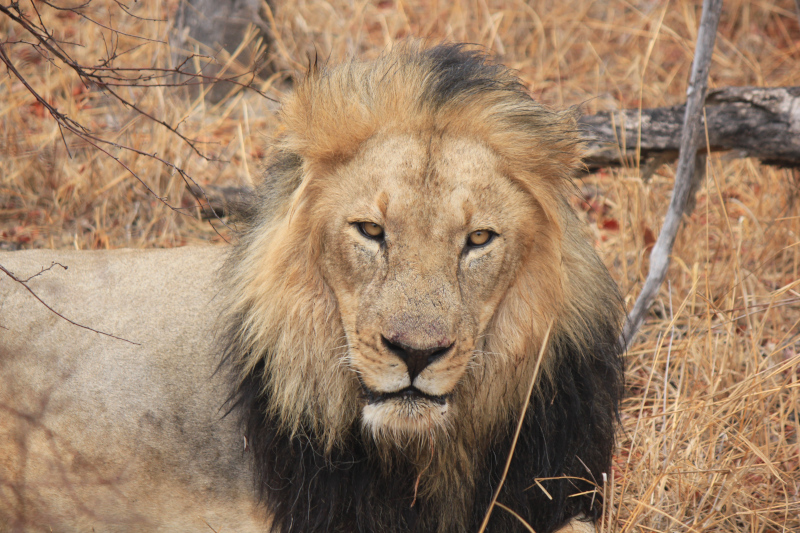
Malema’s skills as a tracker were hard to comprehend.
He seemed to read Nature, animal tracks and broken branches like an open book.
(please be aware that some pictures and the description are not for the faint of heart…)
Despite the density of the bush, somehow, Malema spotted the carcass of a wildebeest, and next to him, a resting lion.

It seemed like the lion just had breakfast.
And like a house cat, he was now taking a nap.
The wildebeest – a large African antelope – served as a vivid reminder of the circle of life, hidden in a bush near the lion.

The lion, seemingly oblivious to our presence, let out a low, rumbling purr, a contented sigh after a successful hunt.
We were mesmerized, a few feet away from this apex predator, witnessing a raw, intimate moment in the wild.
Malema whispered that this was a rare opportunity.
Lions often rest after a large meal, becoming lethargic and less wary of their surroundings.
We sat in awestruck silence.
The only sound was the lion’s gentle breathing and purring.
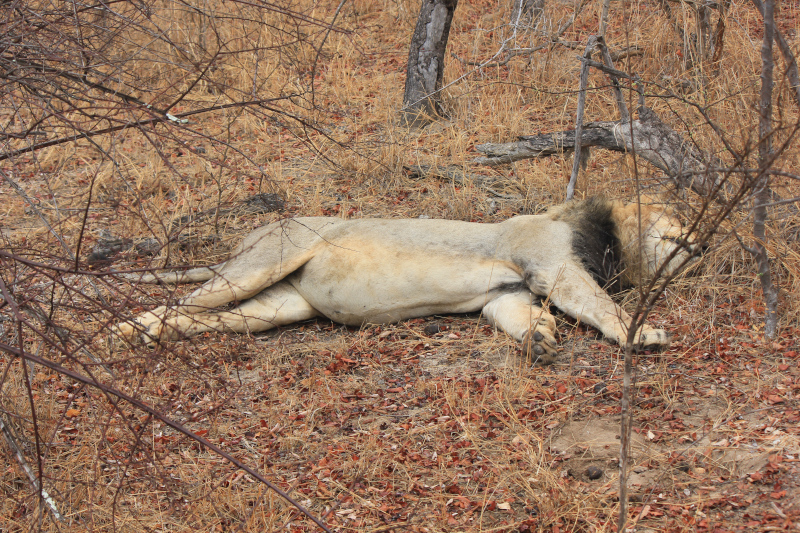
As we slowly backed away, leaving the lion to his nap, a profound sense of humility washed over us.
This was a reminder of the delicate balance of nature, the intricate web of life and death that unfolds in the African savanna.
We had witnessed a fleeting glimpse into the lion’s world, an experience that would forever be etched in our memories.
We can’t help your lion, but if you would like to learn how we can help your cat or your dog with anesthesia and surgery, please contact us through www.DrPhilZeltzman.com
Never miss a blog by subscribing here: www.DrPhilZeltzman.com/blog
Phil Zeltzman, DVM, DACVS, CVJ, Fear Free Certified

Dr. Phil Zeltzman is a traveling veterinary surgeon in Pennsylvania & New Jersey. An award-winning author, he loves to share his adventures in practice along with information about vet medicine and surgery that can really help your pets. Dr. Zeltzman specializes in orthopedic, neurologic, cancer, and soft tissue surgeries for dogs, cats, and small exotics. By working with local family vets, he offers the best surgical care, safest anesthesia, and utmost pain management to all his patients. Sign up to get an email when he updates his blog, and follow him on Facebook, too!
The Devastating Impact of Poaching in South Africa and Zimbabwe
I was very fortunate to recently visit South Africa and Zimbabwe after a veterinary conference. Since 100% of the pet owners we meet are animal lovers, I thought I would share some information and pictures about his incredible trip.

Poaching remains one of the most critical threats to wildlife across the globe.
South Africa and Zimbabwe are two countries where the illegal hunting and capturing of wild animals are especially severe.
From rhinos to elephants, countless animals are suffering, and some are disappearing, due to illegal hunting, killing, and capturing.
Let’s explore the various types of poaching, the reasons behind them, their devastating effects on animal populations, and the actions being taken to combat them.
By better understanding the urgency of the situation, we can all become part of the solution.

What are the different types of poaching?
Poaching isn’t a one-size-fits-all threat.
It occurs in various forms, each with its unique impact on wildlife:
1. Killing for horns & tusks: commercial poaching is the most notorious form of poaching.
It’s the illegal hunting of elephants and rhinos for their ivory tusks and horns, respectively.
These animals are killed brutally for their valuable body parts, which are then sold on the black market.
Rhino horns, for example, are prized in traditional medicine, especially in some Asian countries, despite having no proven medicinal benefits.
Why? Because the horn of a rhino is made of keratin. Keratin is the same protein that makes up human fingernails and hair.
So someone truly interested in the “medicinal” benefits of rhino horns could save a bundle – and lives – by eating their hair and biting their nails…
Rhino horns can fetch prices as high as $27,000 to $45,000 per pound ($60,000 to $100,000 per kg) on the black market.
When you know that a single horn can weigh 2.2 to 6.6 pounds (1-3 kg), you understand that this is life-changing money.
It gets even better (or worse): most rhinos have 2 horns, which doubles the bounty!
Bottom line: rhino horns are one of the most valuable substances on earth.
Below is the picture of the rhino’s skull that has been dehorned illegally.
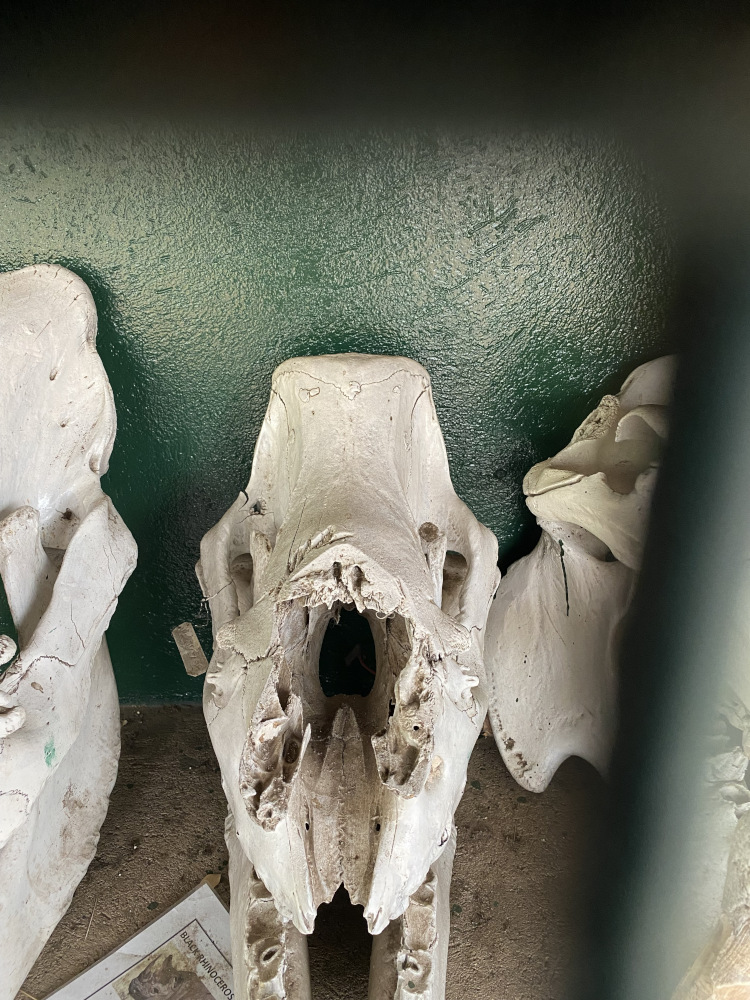
2. Killing for food: This is called subsistence poaching.
In many rural communities in South Africa and Zimbabwe, wildlife is hunted for what is called “bushmeat.”
This is due to food insecurity or economic desperation.
While some of this hunting is legal, the demand for wildlife as a food source can also lead to illegal poaching, depleting animal populations and threatening biodiversity.
3. Capturing live animals: Another form of poaching involves capturing wild animals alive for the illegal “pet” trade or for use in circuses and tourist attractions.
This is especially prevalent for species such as parrots, monkeys, and reptiles.
Animals are often taken from their natural habitats and transported under horrific conditions, causing immense suffering – and death.
Taking care of these animals is not easy. Surgeons deal with a specific type of fractures (“pathological fractures”) due to a lack of calcium and poor feeding habits.
Why is poaching so enticing?
The reasons behind poaching are complex and vary by region.
Some of the key drivers include:
- Poverty and economic incentives: Many poachers come from poor communities, where poaching is seen as a quick way to make money. Rhino horns, as mentioned, can fetch astronomical prices on the black market.
- Demand for animal products: There is demand for animal products like ivory, rhino horn, and skins, especially in international markets. These products are often viewed as status symbols, driving illegal trade.
- Weak law enforcement: In some areas, the lack of effective law enforcement and the corruption within local governments makes it easier for poachers to operate with little fear of consequences. These are gigantic and ruthless territories that are difficult to protect.
Which animals are affected by poaching?
The most commonly poached animals in South Africa and Zimbabwe include:
- Rhinos: Both white and black rhinos are heavily targeted for their horns. Poaching has decimated rhino populations in both countries.
- Elephants: Elephants are poached for their ivory tusks, a practice that has caused a dramatic decline in elephant numbers in Southern Africa.
- Big cats: Lions and leopards are also poached, primarily for their pelts, claws, and teeth, and sometimes due to conflict with farmers.
- Antelopes and other mammals: Species like kudu, impala, and wildebeest are sometimes poached for meat, especially in rural areas, though they are also targeted for their horns. And they can be found in supermarkets…

What are the consequences of poaching on animal populations?
The consequences of poaching are severe.
In South Africa, the rhino population has dropped by more than 70% in the past decade, due to poaching.
Similarly, elephant numbers have been severely impacted, in South Africa and Zimbabwe, where the illegal ivory trade continues to thrive.
The loss of these species not only affects the ecosystems they inhabit, but also threatens the economic stability of local communities that rely on tourism.
Without rhinos and elephants, many national parks lose their appeal to international tourists, which can have devastating economic consequences.
That’s the cruel irony of the situation: some communities kill animals for short-term gains – to survive – without seeing the long-term consequences.
How does poaching happen?
Poaching is a highly organized crime in many cases.
Often, poachers are part of well-established organizations that use sophisticated methods to track, hunt, kill, and transport animals.
Here’s a glimpse into how poaching operations typically unfold:
- The hunt: Poachers use guns, snares, or poison to kill animals.
- Processing: Once the animal is killed or captured, the horns, tusks, or other valuable parts are harvested. Nothing is as heart-wrenching as a dead, tusk-less elephant, or a dead, dehorned rhino, left behind to rot.
- Transportation: Animal parts are often smuggled across borders or shipped internationally to reach black market buyers. This illegal trade is typically carried out by criminal networks.
What is being done to fight poaching?
Both South Africa and Zimbabwe have taken significant steps to combat poaching, but there is still much work to be done:
1. Anti-poaching units: National parks and reserves employ anti-poaching teams that work tirelessly to protect wildlife. These units often include armed rangers who patrol vast areas and confront poachers directly.

2. Technology and surveillance: Advancements in technology, such as drones and satellite monitoring, have enabled conservationists to track animal movements and detect poaching activity in real-time.
3. International cooperation: Countries, Non-Governmental Organizations (NGOs), and international organizations are working together to curb the illegal wildlife trade. This includes sharing intelligence, conducting joint operations, and strengthening laws related to wildlife protection.
4. Community engagement: Some efforts are focused on educating local communities and providing alternative livelihoods to reduce the reliance on poaching. Programs aimed at improving local food security and economic opportunities are promoted to create sustainable, long-term solutions.
What can animal lovers do?
You don’t have to be in South Africa or Zimbabwe to make a difference.
Here are a few ways you can help:
- Donate to anti-poaching organizations: Support groups like the World Wildlife Fund (WWF), African Wildlife Foundation, or Rhino Rescue to fund efforts against poaching.
- Raise awareness: Help me spread the word. Please share this blog with other animal lovers. Tell them about the effects of poaching and the importance of conservation. The more people know, the more pressure can be placed on governments and corporations to act.
- Advocate for stronger laws: Get involved in campaigns advocating for stronger anti-poaching laws and stricter enforcement of wildlife protection policies.
- Be a conscious consumer: Never purchase products made from ivory, rhino horn, or any animal body parts for that matter. Supporting sustainable and ethical businesses helps combat the demand for poached wildlife.
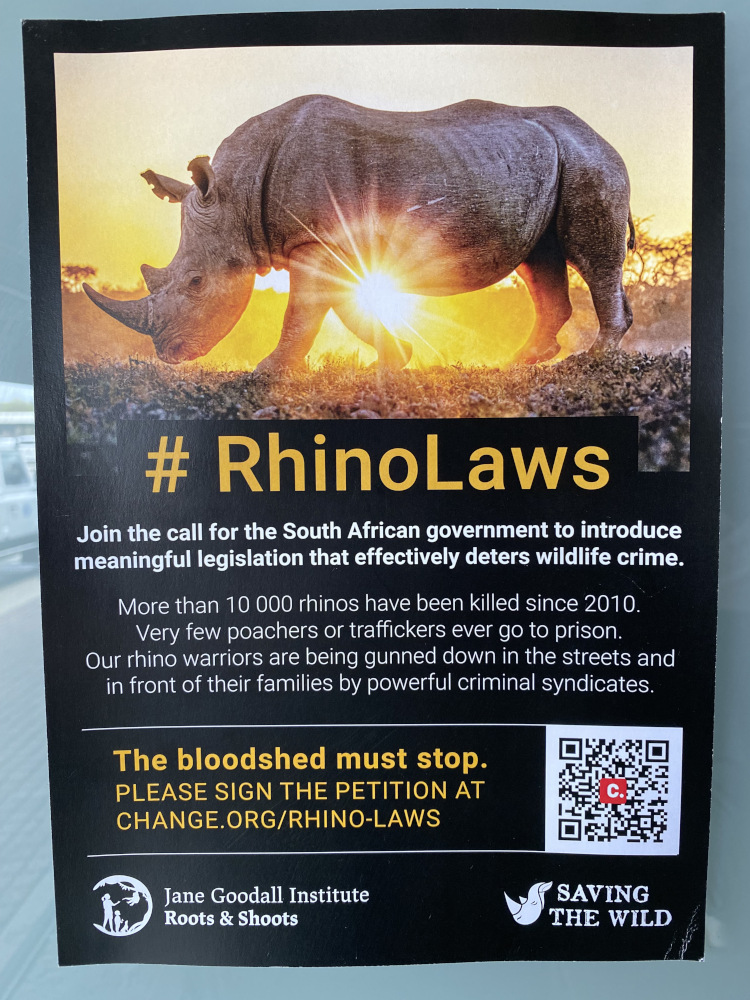
Poaching is a complex and heartbreaking issue, but it is one we can all help solve.
By raising awareness, supporting anti-poaching initiatives, and making ethical choices, we can help protect the incredible wildlife of South Africa and Zimbabwe.
The battle against poaching is far from over, but with collective action, we can ensure that these iconic species do not disappear from our planet forever.
We can’t help your rhino, but if you would like to learn how we can help your cat or dog with safe surgery and anesthesia, please contact us through www.DrPhilZeltzman.com
Never miss a blog by subscribing here: www.DrPhilZeltzman.com/blog
Phil Zeltzman, DVM, DACVS, CVJ, Fear Free Certified

Dr. Phil Zeltzman is a traveling veterinary surgeon in Pennsylvania & New Jersey. An award-winning author, he loves to share his adventures in practice along with information about vet medicine and surgery that can really help your pets. Dr. Zeltzman specializes in orthopedic, neurologic, cancer, and soft tissue surgeries for dogs, cats, and small exotics. By working with local family vets, he offers the best surgical care, safest anesthesia, and utmost pain management to all his patients. Sign up to get an email when he updates his blog, and follow him on Facebook, too!
How do we monitor your pet’s anesthesia?

Vets have been able to dramatically decrease the death rate under anesthesia thanks to better anesthesia drugs and better monitoring.
What does monitoring mean?
Let’s review some techniques we use at our hospital to reduce the risks.
Please understand that not all practices have this equipment, for financial reasons mostly. As a general rule, we perform higher-risk and longer anesthesia and surgery, so we have an obligation to provide the best equipment available.
Vital signs
One of the many roles of the anesthesia nurse is to record the pet’s vital signs and numbers indicated by the devices described below: body temperature, blood pressure, heart rate, respiration rate, temperature etc.
This is critical to determine if there is a trend.
For example, is the blood pressure slowly dropping?
The surgeon is then alerted, and decisions can be made in a timely manner.
ECG
Most people have had an ECG (aka EKG), so most are familiar with the concept. An ECG measures the electric currents generated by the heart. It helps monitor the heart rate and rhythm. It allows early recognition of heart issues, such as arrhythmias (extra heart beats), which can then be treated appropriately.
Blood pressure
Blood pressure measurement is probably the earliest indicator of problems with anesthesia in pets.
Pulse oximetry
This is a way to estimate how much oxygen is being carried by red blood cells.
You may have been connected to such a device at the hospital.
This is the clip that is usually placed on your finger.
In pets, the probe is usually placed on the tongue.
Temperature
Anesthesia commonly reduces the body’s temperature.
We are obsessed with maintaining pets’ temperature, especially small ones.
Opening a body cavity (chest or belly) leads to losing even more body heat.
So we use several modalities to keep the temp up.
For example, every single patient gets a “Bair Hugger,” which is a warming blanket, in addition to a heating pad under their body.
It is important to warm patients up after surgery as well.
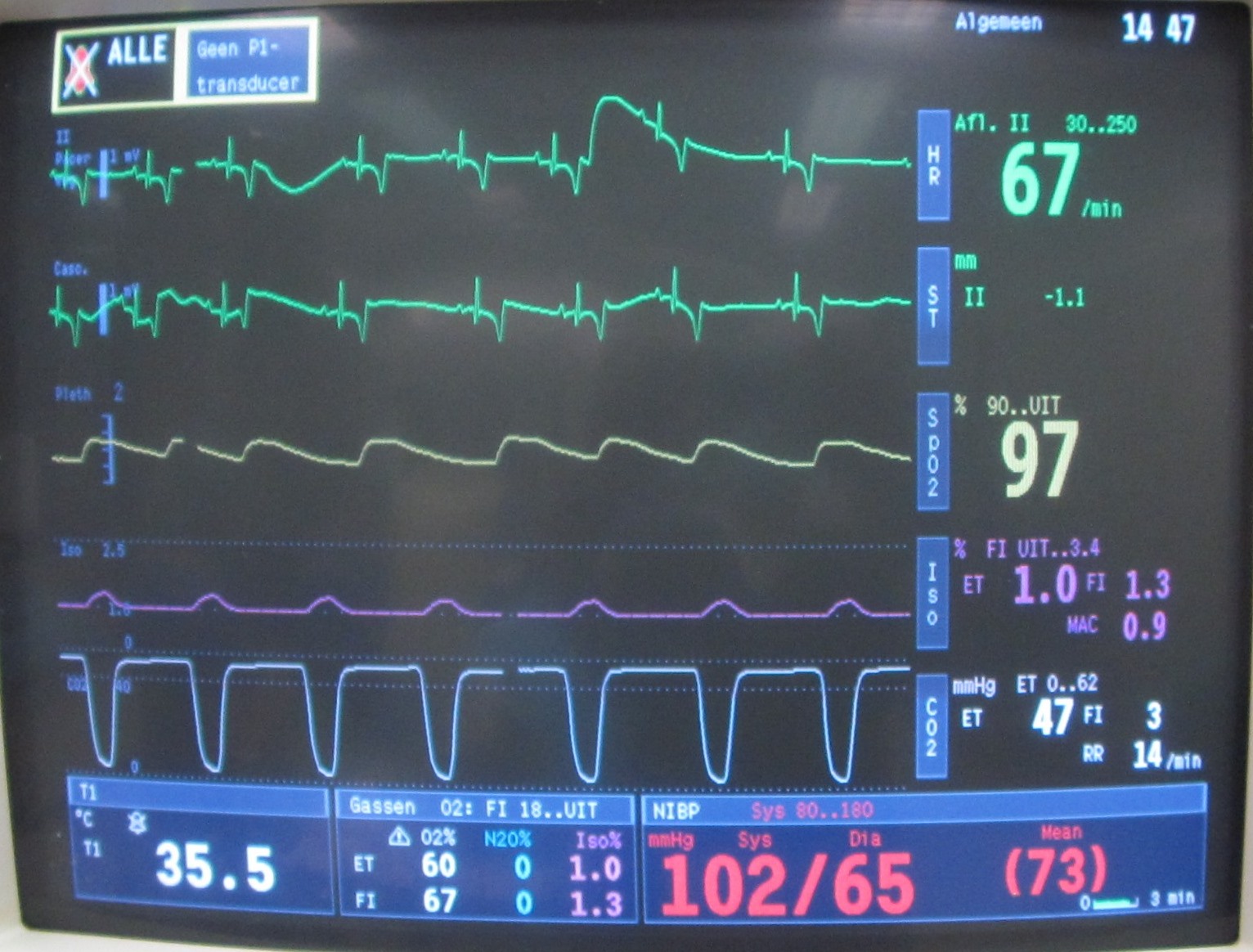
Capnography
This is a fancier machine, not routinely available in general practices.
It monitors the amount of CO2 (carbon dioxide) in the patient.
If it becomes too high, it means that the patient is not breathing enough to “blow off” the toxic CO2.
The anesthesia nurse would then help the patient breathe.
Such equipment undoubtedly helps us greatly improve the safety of anesthesia.
By far, my favorite way to monitor my patients is my skilled nurses.
The risk obviously depends on the patient and the type of surgery.
For example, spaying a healthy 6 month old Lab puppy is less risky that removing a 1 pound cancerous tumor from the liver of a 14 year old diabetic, seizure-prone poodle with heart and kidney disease!
That said, the OVERALL death rate under anesthesia is:
. 0.06 to 0.43% in cats;
. 0.11 to 0.43% in dogs
according to several studies conducted in the late 1990s.
As you can see, careful monitoring makes the anesthesia as safe as possible, so that we can reach our ultimate goals: a healthy pet and a happy pet owner.
If you would like to learn how we can help your pet with safe surgery and anesthesia, please contact us through www.DrPhilZeltzman.com
Never miss a blog by subscribing here: www.DrPhilZeltzman.com/blog
Phil Zeltzman, DVM, DACVS, CVJ, Fear Free Certified

Dr. Phil Zeltzman is a traveling veterinary surgeon in Pennsylvania & New Jersey. An award-winning author, he loves to share his adventures in practice along with information about vet medicine and surgery that can really help your pets. Dr. Zeltzman specializes in orthopedic, neurologic, cancer, and soft tissue surgeries for dogs, cats, and small exotics. By working with local family vets, he offers the best surgical care, safest anesthesia, and utmost pain management to all his patients. Sign up to get an email when he updates his blog, and follow him on Facebook, too!
Veterinary nurses save animals’ lives (and this surgeon’s, too!)
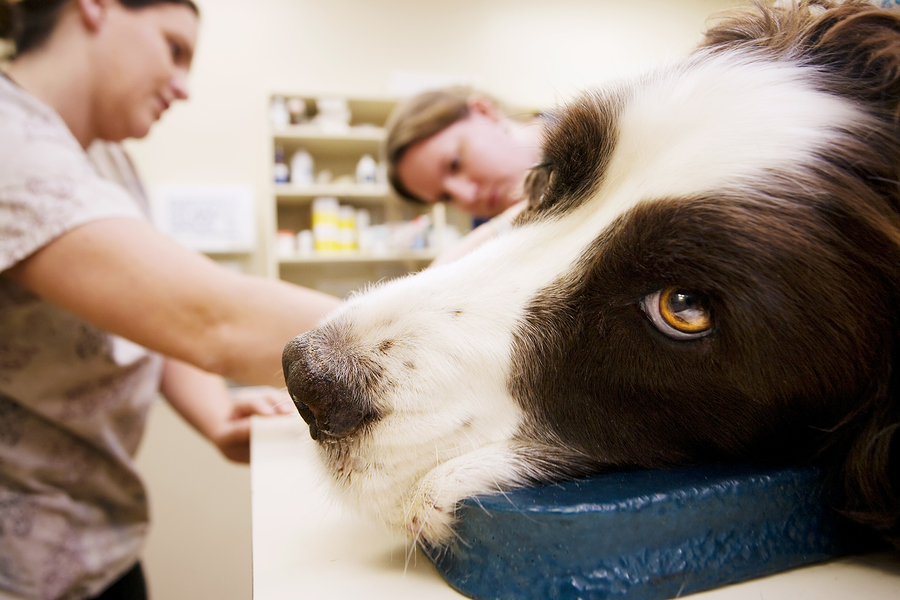 I can’t even imagine what veterinary practice would be like without our veterinary nurses. Actually, I can: Pure chaos.
I can’t even imagine what veterinary practice would be like without our veterinary nurses. Actually, I can: Pure chaos.
I’ve long referred to them as veterinary nurses because I think it’s a better description of the role they play in animal health practice than the current official “veterinary technician.” It turns out I was just ahead of the curve, because the National Association of Veterinary Technicians in America (NAVTA) has officially come out in favor of a national program for registered veterinary nurses, RVNs, to replace “technician.”
Whatever you call them, without a shadow of a doubt they are the main reason I am able to do what I do. They are lifesavers — and not just pets’ lives, but vets’ lives, too!
If your pet is one of my surgical patients, or if you’ve been to any vet recently, I want you to consider this:
- A nurse started the consultation
- A nurse admitted your pet for tests or surgery
- A nurse drew and analyzed blood work
- A nurse took x-rays
- A nurse provided sedation, anesthesia, and pain relief
- A nurse monitored anesthesia
- A nurse assisted in surgery
- A nurse cleaned surgical instruments
- A nurse fed your pet
- A nurse changed your pet’s bedding
- A nurse applied a bandage and managed wound care
- A nurse discharged your pet after surgery
In fact, a veterinary nurse did so many things it would take two pages to list them all. I routinely see nurses hand-feed finicky patients, carry them around (granted, more often with cute fur balls than 80 pound Labs), pet and spoil the patients, give them kisses, talk to them in a funny voice, and more.
Did you know all that was happening behind the scenes? How about these real-life examples from the work of the best tech I work with?
- She buys a fast food meal with her own money and feeds it to dogs who are going to be euthanized (with the owner’s permission), saying, “They might as well go over the rainbow bridge with a stomach full of junk food!”
- She runs has her own mini-rescue organization
- She’s been known to pay for veterinary care a pet’s owners can’t afford
It’s National Veterinary Technician Week, so if you happen to be at a vet clinic, or if you are particularly grateful to a nurse or a group of nurses, this week would be a great time to express your gratitude!

Dr. Phil Zeltzman is a traveling veterinary surgeon in Pennsylvania & New Jersey. An award-winning author, he loves to share his adventures in practice along with information about vet medicine and surgery that can really help your pets. Dr. Zeltzman specializes in orthopedic, neurologic, cancer, and soft tissue surgeries for dogs, cats, and small exotics. By working with local family vets, he offers the best surgical care, safest anesthesia, and utmost pain management to all his patients. Sign up to get an email when he updates his blog, and follow him on Facebook, too!

